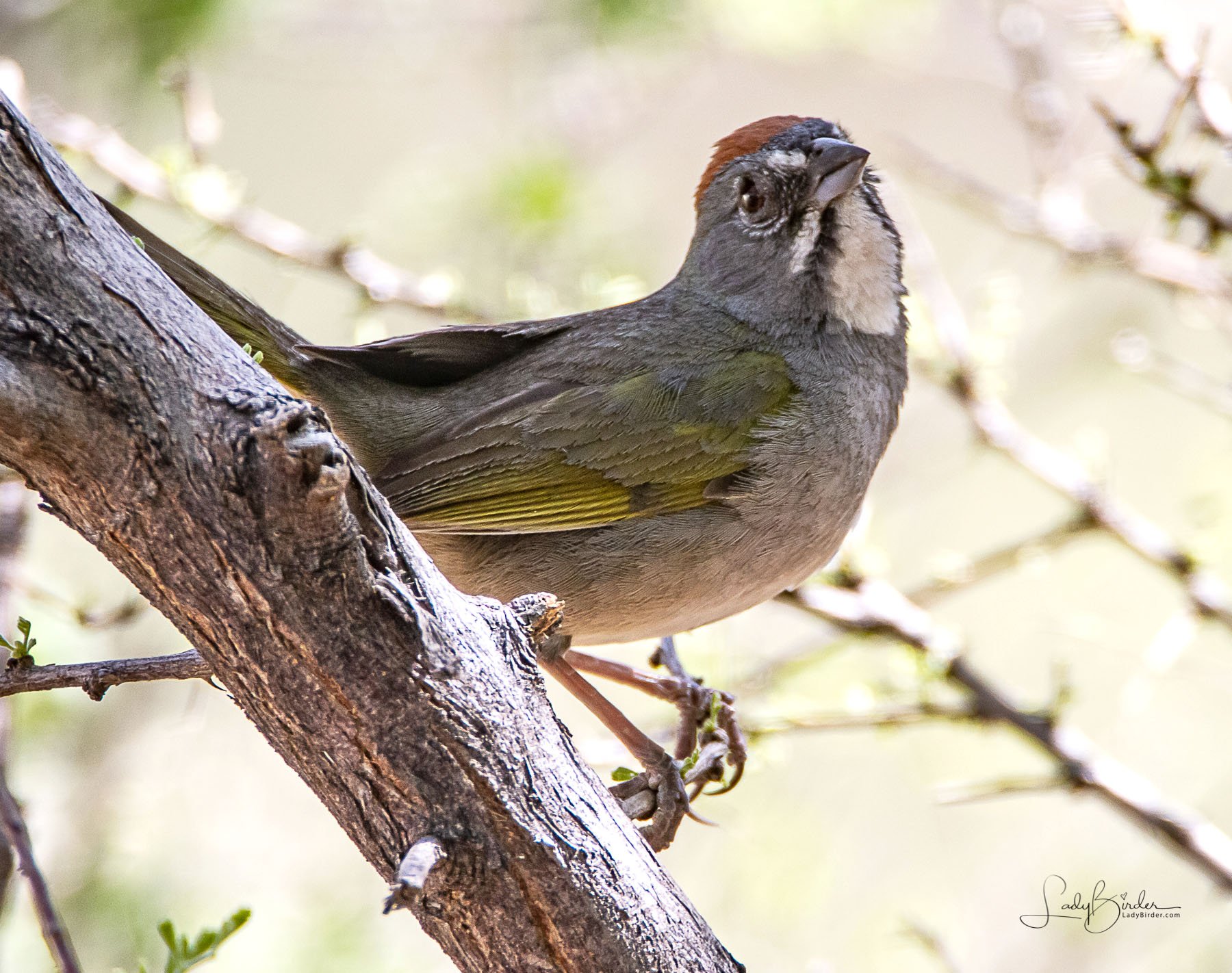Finding Charm in the Chiricahuas
April 30, 2018
I’ve written about the Chiricahua Mountains before, about how this mountain range rises suddenly out of the southeast Arizona desert like an island and is, in fact, the largest of what are known as Sky Islands. I’ve talked about the birds, animals and plants that thrive nowhere else in the U.S. But with each visit to this unique area, I see, hear and feel something new that adds to my love of the place. It’s like hanging another jeweled charm from a favorite bracelet with cherished memories of special trips.
The Chiricahua Mountains rise out of the southeast desert like an island rises out of the sea.
On my recent visit, I became acutely aware of how determined life is – from the plants and trees that grow out of an outcropping of weathered rock or from the charred remains of a forest fire to the resilient people who call this isolated place home. When the light was just right, I saw how a creative mind can turn volcanic rock pillars into fanciful figures and curious objects. While hiking, I often stopped to listen to the wind rippling through the tops of newly leafed-out Cottonwoods and Arizona Sycamores and noted how it sounded like a wave crashing over a tide pool and then slipping back into the sea. On an after-dinner stroll, I saw a sky full of twinkling stars like millions of pinpoints of light on the surface of a black sea and heard the barking of an Elf Owl for the first time – a sound that startled and delighted me at the same time. I struggled in thin air up a steep and unstable slope to be richly rewarded with the sight of an uncommon watermelon-colored bird called a Slate-throated Redstart singing in a tree just ten feet away.
Portal Store, Cafe and Lodge is our base of operation in southeast Arizona.
As in the past, our headquarters for this two-day trip was the town of Portal, a small, unincorporated community on the east side of the Chiricahuas at the mouth of Cave Creek Canyon. It has a charm, unlike any place I’ve visited. There is a restaurant, lodge, Post Office, library and a scattering of rustic homes and shacks that look like they’ve been there since the area was first settled. Some probably have. The community caters heavily to birders: the restaurant shop is filled with bird-related merchandise. Residents set up feeders in their yards, offering viewing benches in exchange for donations to pay for bird food and treats. I have read that half the species of North American birds can be seen in Cave Creek Canyon, and we were there to see as many as possible – specifically, a Fan-tailed Warbler reported earlier in the week. Unfortunately, this rare bird had flown the coop the day before we arrived, but plenty of other goodies delighted our souls and set our hearts aflutter.
View of the fire-devasted landscape from Pinery Canyon Road.
We rumbled up Pinery Canyon Road, which twists and turns up one side of the mountain and down the other, and saw how life is gaining a foothold after a forest fire.
In a place like this – so vast and full of avian treasures – it’s helpful to know someone familiar with its secrets. In addition to the locals who open their yards and share their knowledge with birders, we were exceptionally fortunate to have birding friends that live in town, who so graciously showed us some of their recent finds: a Whiskered Screech Owl tucked into the knot of a tree, a couple of Blue-throated Hummingbird nests, one of which contained tiny Tic-tac-sized eggs. They drove us to a sweet spot at the intersection of two narrow mountain dirt roads where at this time of year, reliably hosts mixed flocks of migrating Warblers, as well as Mexican Chickadees, a bird common in mountain forests in Mexico but crosses the border only to the Chiricahua Mountains of Arizona and the Animas Mountains of New Mexico.
So, without further ado, let me share some of the charms I added to my “bracelet” of year and life birds I saw in the Chiricahuas last week.



















